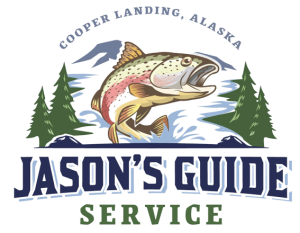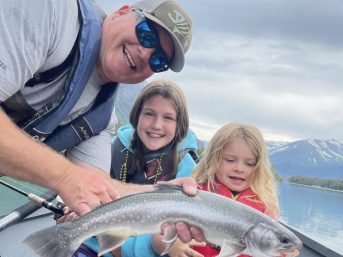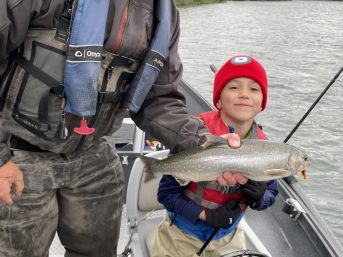This is Part Two of a pair of blogs that dig into the logistics of bringing children on an Alaskan fishing adventure on the Kenai River. At Jason’s Guide Service we love to have kids in the boat, but there are some considerations that will make the trip enjoyable for everyone.
My first tip is to bring lots of snacks and beverage for the kiddos. If or when they get bored, food and drink is always an excellent diversion.
I see a lot of parents being almost militant at times about their kids fishing non-stop or staying completely focused on fishing for the entire trip. I believe this to be a mistake. When I’m not fishing or in the outdoors I have an attention span of a five-year old so I know all about daydreaming or getting bored easily. When your kid gets bored or fidgety let them put the rod up for a minute and hang out or daydream. I always love to make sure a kid has access to the family phone to take photos of the trip.
If your kid needs to move around I can bring them to a gravel bar and let them throw rocks and explore. It’s always better to have them happy and enjoying themselves by doing something on the water that is fun for them. If they enjoy their maiden voyage they’ll keep coming back for more trips and develop a love and passion for the sport. Having a bad experience will ensure them not wanting to come back.
Everyone who floats the Kenai River has different ideas of what a great fishing trip is. When taking kids out on the water it’s important to know their interest level for fishing and if they have a technique or species they want to target. Never underestimate a child’s ability to learn and when you fuel that desire you can help create a passion for fishing that never goes away.
There is no age too young to get that kid on the water whether you are putting a fly rod in their hands or a spinning rod. It doesn’t matter if you are targeting rainbow trout, char, sockeye or silver salmon, just make sure they are having fun and getting the opportunity to try what they want on their guided fishing trip.
The biggest thing to remember, no matter what, is that fishing is supposed to be enjoyable. It doesn’t matter if you are chunking rocks in the river, writing your name on a sand bar with drift wood, exploring gravel bars for bear tracks and spawned-out salmon, or running the perfect drift with your fly rod, make sure your guided fishing trip on the Kenai River is about the young ones and you will be doing fishing trips for life.



